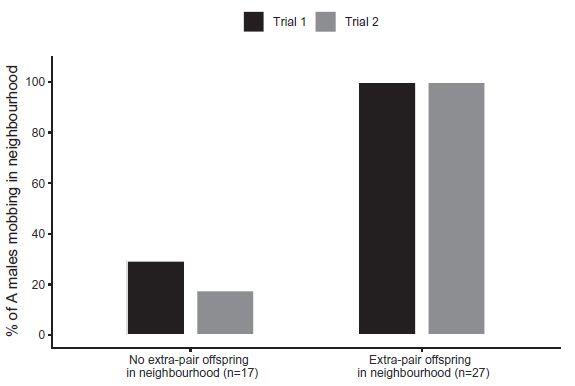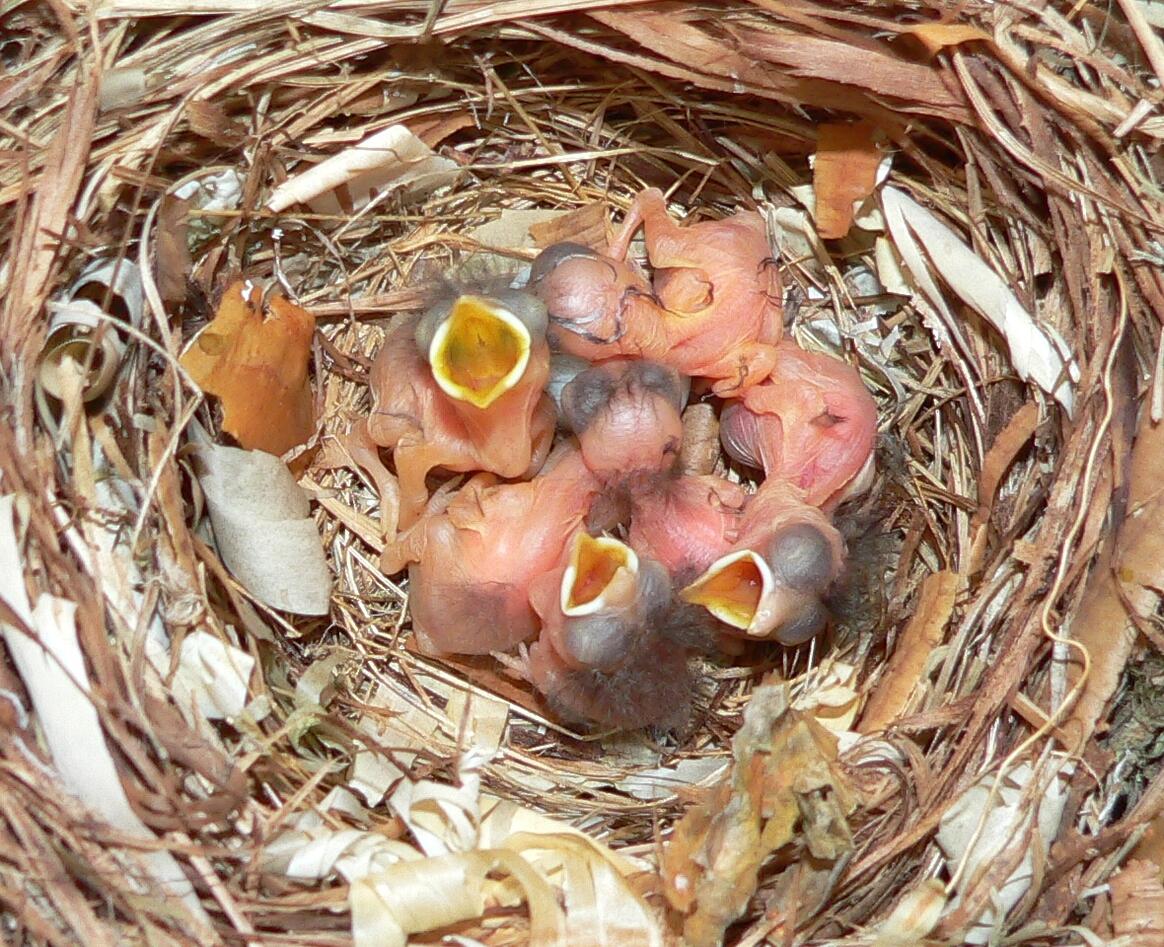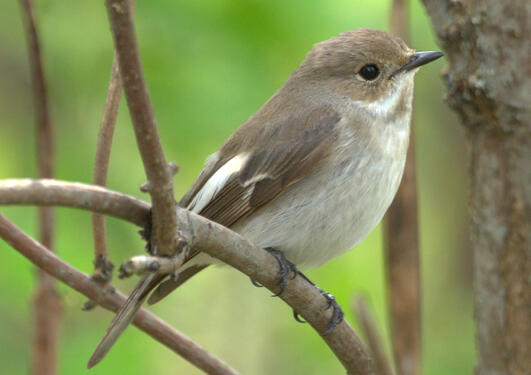Extra-pair paternity facilitates cooperation in pied flycatchers
New study published in the Proceedings of the National Academy of Sciences shows that infidelity can promote cooperation among male pied flycatchers.
Hovedinnhold
In an earlier paper,1 Sigrunn Eliassen and Christian Jørgensen predicted that extra-pair paternity could promote cooperation in neighbourhoods consisting of groups of socially monogamous mating pairs and their offspring. The logic is simple. Extra-pair paternity creates uncertainty about paternity: a male who has a fling may sire offspring with other females than his regular partner, but does not know exactly which of the offspring female is raising are his (if any). At the same time, he cannot be sure that all offspring in his own nest are his. This can create conditions where the males, unable to discriminate between their own and other males' offspring, are better off by defending the whole neighbourhood, as they then end up helping their own extra-pair offspring.
In a new paper in PNAS,2 Adele Mennerat, Sigrunn Eliassen, and their collaborators show that exactly the predicted dynamics is at works in pied flycatchers (Ficedula hypoleuca). By carefully observing flycatchers in Latvia, the researchers were able to show that males with extra-pair copulations put more effort in cooperative defense than those without. This involved behaviours such as joining predator-mobbing, approaching predators, and attacking predators, all of which incur costs in terms of time and risk of injury.
These findings accord with earlier findings from blue tits (Cyanistes caeruleus),3 showing that broods with mixed paternity experienced less brood failure at the nestling stage than broods with single paternity. This highlights how extra-pair mating can be a strategic choice by the female, improving her reproductive fitness.
Phys.org provides the following lay summary of the new paper: Researchers find extra-pair paternity leads to cooperation in feeding and fending off threats in bird species.
References
1. Eliassen, S., and Jørgensen, C. 2014. Extra-pair mating and evolution of cooperative neighbourhoods. PLoS ONE, 9: e99878. doi:10.1371/journal.pone.0099878
2. Krams, I. A., Mennerat, A., Krama, T., Krams, R., Jõers, P., Elferts, D., Luoto, S., et al. 2022. Extra-pair paternity explains cooperation in a bird species. Proceedings of the National Academy of Sciences of the USA, 119: e2112004119. doi:10.1073/pnas.2112004119
3. Mennerat, A., Charmantier, A., Jørgensen, C., and Eliassen, S. 2018. Correlates of complete brood failure in blue tits: could extra-pair mating provide unexplored benefits to females? Journal of Avian Biology, 49: e01701. doi:10.1111/jav.01701




